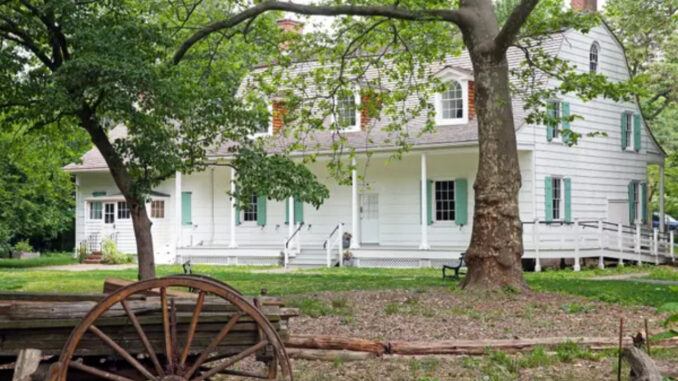
BY KIM GILL
After the City Council funded a $2.5 million renovation of the Lefferts Historic House in Prospect Park last year, the city will now provide another $4 million to preserve the burial ground for enslaved Africans who worked at the house.“It’s not going to be an easy project, but it’s exciting,” said Councilmember Rita Joseph, who secured the funding for the burial site.
The Lefferts Historic House is located a few blocks from its original location on Flatbush Ave. It is one of the few surviving Dutch colonial houses left in New York City. It was inhabited by Dutch immigrants who migrated to the United States in the 1660’s. However, beneath its rich history lies a dark past: it was home to 25 enslaved people.
“The concept of burying our history is constant,” said Joseph.
The Flatbush African burial ground was deeply hidden for centuries until 2001 when archaeologists unearthed it. According to research conducted by the Department of Housing Preservation & Development (HPD), these burial grounds were hard to locate because they were never depicted on early maps of the area where the home was originally located, between Church and Bedford Avenue. Many residents of the community didn’t know of its existence until recently. Emmanuel Thingue, an architect with New City Parks, a non-profit organization that helps communities create needed parks, has created a design that not only commemorates the burial ground but also the journey and experiences of people enslaved there.
“Since we can’t bring our ancestors back, there’ll be soil that’s coming from these different countries where people came from, and it’s a way of connecting both symbolically, spiritually, as well as physically,” Thingue said.
The design itself will heavily reference the Middle Passage, the journey that brought enslaved Africans to the New World. Thingue’s design highlights four aspects of enslavement: the door of no return, toil, endurance, and transfiguration. Some of these features include a communal circle for people to tell stories. There will also be three granite slabs to represent the Middle Passage. To ensure that the design incorporates the future, there will be a wall where visitors can write and attach notes. Because many people were unaware of the burial ground, Thingue felt that including a lighting structure featuring red, yellow, and green would serve as a focal point to draw in visitors.
As more African burial grounds crop up across the city, Councilwoman Joesph is working with the City Council to pass legislation to ensure that burial grounds, once discovered, remain funded and maintained. Last month, Councilwoman Kamillah Hanks of Staten Island introduced the Benjamin Prine Act – named after the last enslaved person born in New York – which aims to “establish a formal process for identifying, recognizing, and preserving African-American burial grounds in New York City.” In a press conference last month, Hanks said, “Burial grounds, ones like the ones where Benjamin is buried in my district, have been unceremoniously paved over, erased from our city’s physical and historical landscape.” Joseph hopes this legislation will help encourage city agencies to act on aiding the preservation of these burial grounds.
Despite securing funding for the Lefferts burial project, there are concerns that inflation may hinder its development. Allyson Martinez, a community resident, expressed her concerns. “If you want to do a community engagement project, $4 million dollars seems like a flash in the pan for what it will take to probably do that.”
Thingue and Joseph hope to secure additional funding by partnering with the Department of Parks and other city agencies. The project is still in the planning phase, and a date of completion has yet to be determined.
